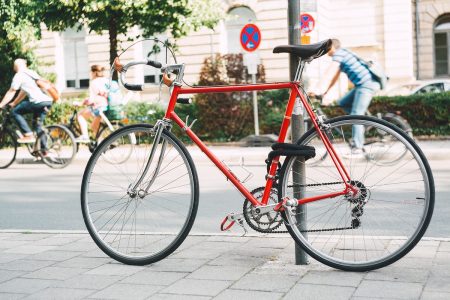
Some of the most glaring effects of the COVID-19 pandemic have been on human mobility. The pandemic has affected our frequency, modes, and distances of travel, leading many of us to increasing our time spent biking and walking as we faced limits on the destinations available to us during this unprecedented time. Local and regional governments have also been forced to confront these mode changes swiftly and work to account for the needs of travelers, restaurants, and businesses in accommodating COVID-19 safety guidelines. Two DCRP faculty members, Dr. Tab Combs and Dr. Matthew Bhagat-Conway, have been working to better understand these changes and their short- and long-term implications.
DCRP research associate, Dr. Tab Combs has been documenting public sector responses for non-car travel use and access affected by the pandemic. She has compiled an extensive open-source database of over 1400 government responses across 500 cities, states, and countries aimed to allow researchers to analyze these policy responses. The database is constantly growing, and submissions are welcome at the Pedestrian and Bicycle Information Center website. You can learn more about the work she put into developing this database in her article, “Shifting streets COVID-19 mobility data: Findings from a global dataset and a research agenda for transport planning and policy” in Transportation Research Interdisciplinary Perspectives.
DCRP’s newest faculty member, Dr. Matthew Bhagat-Conway, has focused his research on individuals’ expectations about how their travel behavior will change post-pandemic, in the short- and long-term. Through his work in the COVID Future Survey Project, Dr. Conway found that twice as many respondents find themselves likely to telecommute post-pandemic as did pre-pandemic and that 70% of people new to telecommuting report no decrease in productivity. His findings also indicate that business air travel is likely to decline, with 40% of business travelers expect reductions in their air travel frequency (largely due to the adoption of videoconferencing meeting formats.) Lastly, his findings indicate that people expect they will bike and walk more in their post-pandemic lives, both for recreation and for transport. Read more about Dr. Conway’s work in his article, “The potential stickiness of pandemic-induced behavior changes in the United States.”